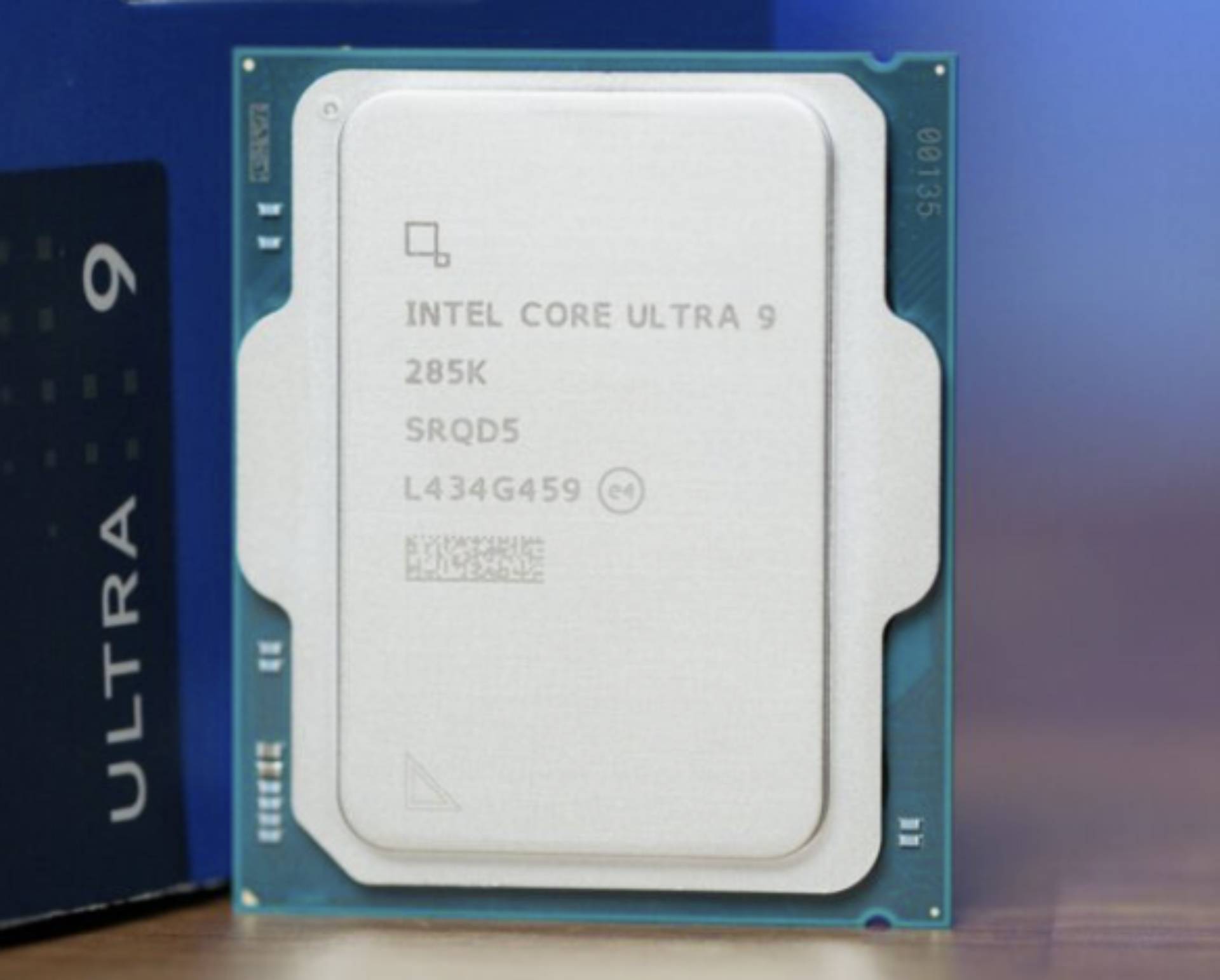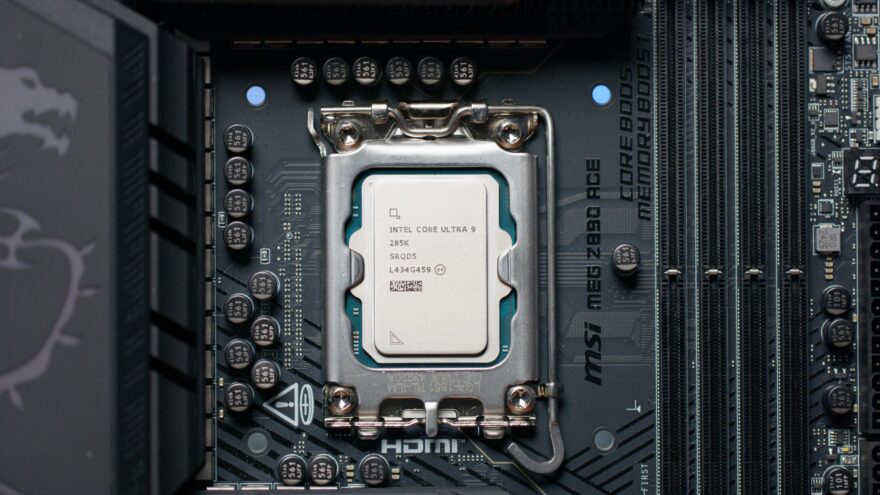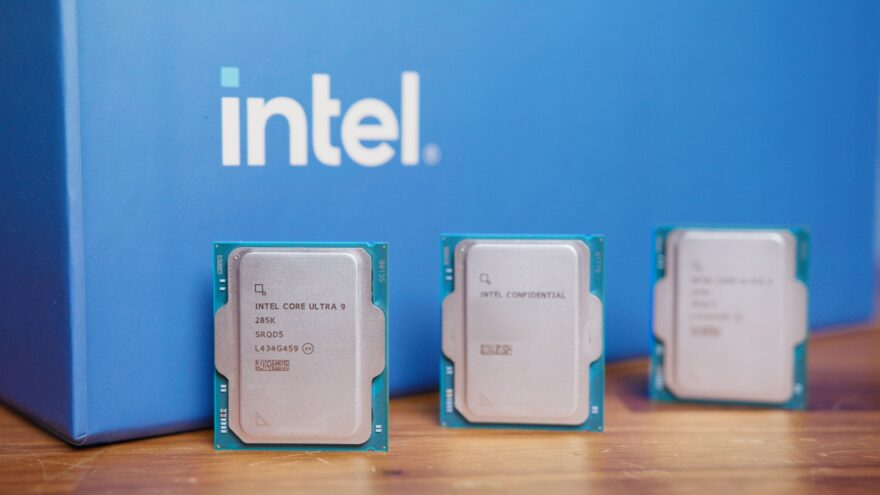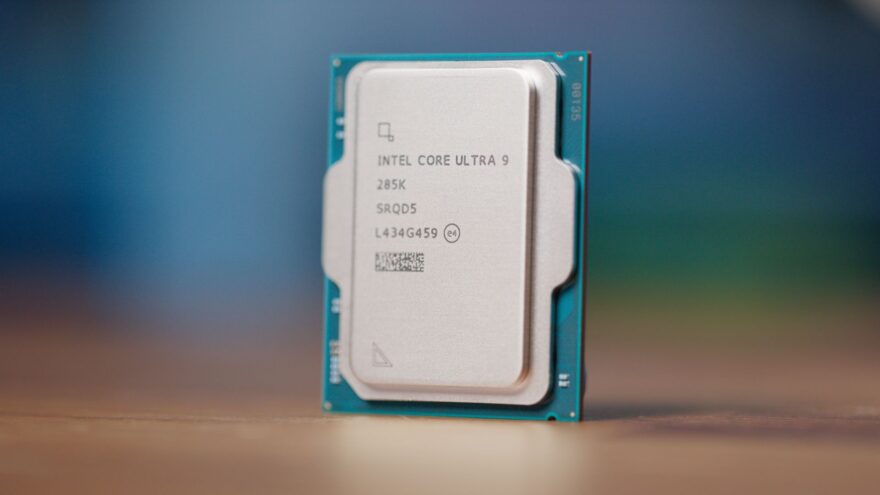Intel Core Ultra 9 285K CPU Review

The Intel Core Ultra 9 285K is the flagship processor in Intel’s highly anticipated “Arrow Lake” series, designed to dominate the high-end desktop market, as you might expect. While we’ve tested the Core Ultra 5 and the 7 today, the 9 is expected to be the fastest in many multi-core tasks such as rendering videos, calculation, and other intensive workflows. However, with the overall higher clock speeds being able to boost up to 5.7 GHz, it’s likely this CPU can dominate in many other tasks such as gaming performance too.
With 8 Performance-cores and a staggering 16 Efficient-cores, resulting in a total of 24 cores and 24 threads, with a boost clock of up to 5.7 GHz and an expansive 36MB L3 cache, the 285K is a pretty serious bit of kit. Of course, more cores and higher speeds will also result in more heat. However, with Intel’s strong focus on efficiency for these 1st Gen Core Ultra CPUs, we’re not expecting it to be the thermal time bomb that previous i9 CPUs tended to be.

While the Core Ultra 5 and the Core Ultra 7 are strong options for both gaming and daily workflow, the Core Ultra 9 is here for the enthusiast users who want the best performance possible. With more cores, and bigger clock speeds, it should dominate for all workflows and will have clear benefits for content creators. But of course, let’s put that to the test and find out!

Specifications
- Cores and Threads: 18 cores (8 performance-cores + 10 efficient-cores) with 36 threads. This is a significant jump in core count compared to the Ultra 5.
- Cache: A large 36 MB Intel Smart Cache. More cache generally means faster performance.
- Clock Speed: Blazing fast speeds with up to 5.70 GHz clock speed, thanks to technologies like Intel Thermal Velocity Boost.
- Power: 125W base power with a maximum turbo power of 250W. This chip will likely need robust cooling.
- Graphics: Integrated Intel UHD Graphics with 4 Xe-cores. Similar to the Ultra 5.
- AI: Intel AI Boost for accelerated artificial intelligence tasks.
- Memory: Supports up to 192 GB of DDR5 6400 MT/s memory. Same as the Ultra 5.
- Socket: Uses the same FCLGA1851 socket as the Ultra 5.

Intel Core Ultra Series

Intel’s Core Ultra CPUs are here at last, marking a big change in the Intel naming structure, albeit not a particularly slick one. These are technically the 15th Gen Intel Core CPUs, but they’re the first generation of the new Intel Core Ultra series! These processors codenamed “Arrow Lake-s” mark the debut of Intel’s new nomenclature, replacing the familiar “i” series with the “Ultra” branding. This change signifies more than just a name update; it reflects a fundamental change in architecture and focus, a new starting point for future generations of CPUs, with the first gen having a significant focus on thermal performance and power efficiency for Intel to build upon.
AI and Beyond

One of the most prominent features of the Core Ultra series is its emphasis on artificial intelligence (AI). These CPUs are the first to feature a dedicated Neural Processing Unit (NPU), a specialized hardware component designed to accelerate AI tasks. This allows for significant performance gains in AI-powered applications, ranging from content creation and gaming to productivity and security. Intel claims that the Core Ultra CPUs deliver up to 50% faster performance in AI-enabled creator applications compared to competing processors.
Power Consumption and TDP

The new architecture features a hybrid design of performance cores (P-cores) and efficient cores (E-cores), similar to what we’ve seen on previous CPUs, which can deliver up to 14% faster multi-threaded performance compared to the previous generation. Additionally, Intel has achieved a 40% reduction in package power, which is great news, as the previous gens were notoriously power-hungry and had lofty cooling requirements. The Core Ultra series also introduces a new platform and socket (LGA1851), requiring users to upgrade their motherboards to accommodate these CPUs, which is why today we also have a series of new motherboard reviews for you to read.









For gaming, 7800X3D is still the best option, and the $/FPS is far better at this performance level.
If you're doing workstation stuff, a threadripper may be a better option if you earn money from getting work completed earlier.
Would be good to see the system costs for the 7800X3D and the 285K as used in this review.
Horrible man! This is the new Bulldozer…